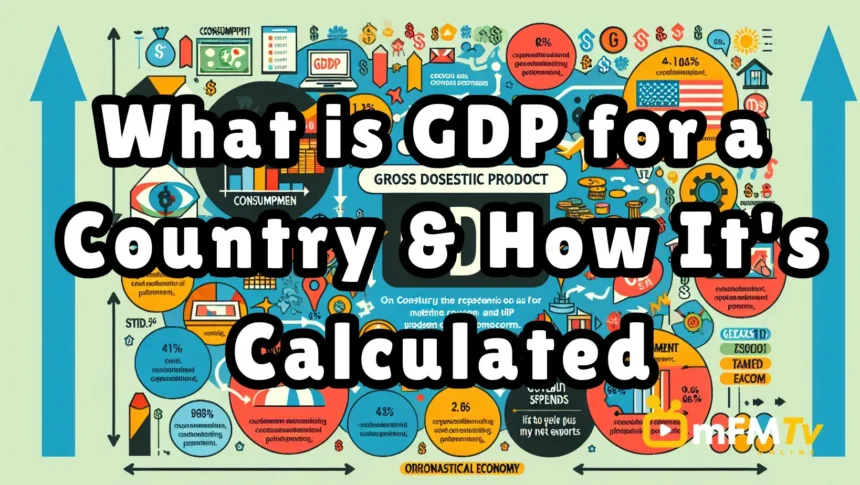Gross Domestic Product (GDP) is a critical economic metric that represents the total value of all goods and services produced within a country’s borders over a specific time period, usually a year or a quarter. It is a comprehensive measure of a nation’s overall economic activity and an indicator of its economic health. Understanding GDP is essential for policymakers, economists, and business leaders as it provides insights into the size and performance of an economy.
What is GDP?
GDP can be defined as the monetary value of all finished goods and services made within a country during a specific period. It includes everything produced by all sectors of the economy: agriculture, manufacturing, construction, and services. GDP serves several purposes:
- Economic Performance: It indicates the economic performance of a country. A rising GDP indicates economic growth, while a falling GDP suggests economic contraction.
- Living Standards: GDP per capita (GDP divided by the population) is used to compare the standard of living between different countries.
- Policy Making: Governments and central banks use GDP as a key indicator to formulate fiscal and monetary policies.
- Investment Decisions: Investors use GDP growth rates to gauge the economic prospects of a country and make informed investment decisions.
How is GDP Calculated?
GDP can be calculated using three main approaches: the production (or output) approach, the income approach, and the expenditure approach. Despite using different methods, each approach should theoretically yield the same GDP value.
1. Production (Output) Approach
This approach calculates GDP by adding up the value of all final goods and services produced in the economy. It avoids double counting by considering only the value added at each stage of production.
Formula:
[ GDP = \sum (Value \, of \, Final \, Goods \, and \, Services) ]
Example:
If a car manufacturer produces cars worth $1 million and buys inputs (steel, rubber, etc.) worth $600,000, the value added is $400,000.
2. Income Approach
The income approach calculates GDP by summing all incomes earned by individuals and businesses in the economy, including wages, profits, rents, and taxes, minus subsidies.
Formula:
[ GDP = \text{Wages} + \text{Profits} + \text{Rent} + \text{Interest} + \text{Taxes} – \text{Subsidies} ]
Example:
If total wages are $500,000, profits are $300,000, rents are $100,000, and taxes minus subsidies are $100,000, then GDP is $1 million.
3. Expenditure Approach
This is the most common method and calculates GDP by adding up all expenditures or spending in the economy. It includes consumption, investment, government spending, and net exports (exports minus imports).
Formula:
[ GDP = C + I + G + (X – M) ]
Where:
- ( C ) = Consumption by households
- ( I ) = Investment by businesses
- ( G ) = Government spending
- ( X ) = Exports
- ( M ) = Imports
Example:
If household consumption is $600,000, business investment is $200,000, government spending is $150,000, exports are $100,000, and imports are $50,000, then GDP is $1 million.
Real vs. Nominal GDP
- Nominal GDP: Measures the value of all finished goods and services produced within a country’s borders using current prices during the year they were produced. It doesn’t account for inflation or deflation.
- Real GDP: Adjusts nominal GDP for changes in price level, providing a more accurate reflection of an economy’s size and how it’s growing over time by accounting for inflation.
GDP Limitations
While GDP is a vital indicator of economic health, it has limitations:
- Non-Market Transactions: GDP does not account for non-market transactions such as household labor or volunteer work.
- Income Distribution: GDP does not indicate how wealth is distributed among the population.
- Sustainability: GDP does not consider whether the economic growth is sustainable in the long term.
- Quality of Life: GDP does not measure quality of life factors such as health, education, and environmental quality.
Conclusion
Gross Domestic Product is a crucial metric that provides a snapshot of a country’s economic activity and health. By understanding how GDP is calculated and its limitations, stakeholders can make more informed decisions regarding economic policies, business strategies, and investments. Despite its limitations, GDP remains a fundamental tool for economic analysis and comparison.




